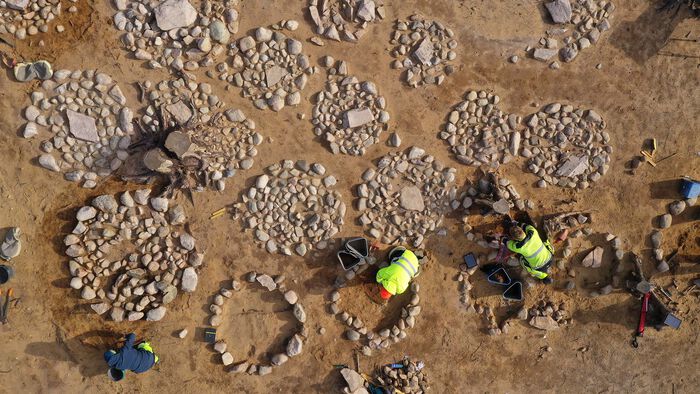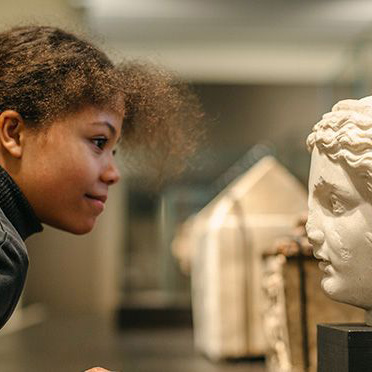Permanent exhibition
26 June–29 September 2024
In the autumn of 2023, our archaeologists investigated traces of the past outside Fredrikstad. They were surprised to discover more than 40 circular stone graves.
The archaeologists discovered circle after circle made of meticulously placed stones. The circles were approximately one to two meters wide. The stones were laid closely together, just like cobblestones in a street. Several of the graves had a large stone in the center. Beneath these, the archaeologists found remains of pottery and burned bones. After examining the bones, experts could announce the biggest surprise: almost all the graves belonged to children, except for two graves for adults on the outskirts of the burial site.
In memory of the children
Many had died as infants, while others were between three and six years old when they died. The infant mortality rate was probably high in this period. The field of children’s graves is unique in a Norwegian context, and opens up many questions to which the answers are still unknown: Why were the children buried in a separate place? Why here? And how did they hold on to this tradition for several hundred years?
The exhibition includes a reconstructed stone grave and provides insights into the delicate and sometimes emotional work process of the archaeologists who carried out the excavations. Through photographs and video material, visitors can gain insight into the context and significance of the find, and into the lives and deaths of our predecessors.
Bronze and iron
The children's graves date from the transition between the Bronze Age and Iron Age. Most of them were buried between 800 and 200 BC. The children's graves were found in an area rich in cultural heritage, including many rock carvings from this period that speak of voyages and sun worship. The newly discovered children's graves open up new questions about the people who lived back then.
Preserving Cultural Heritage
The Museum of Cultural History conducts archaeological surveys before starting road construction or other interventions in nature where cultural heritage could be hidden. In this case, excavations began because a local quarry was to be expanded. The archaeologists believed they would find traces from the Stone Age and had no suspicion they would encounter such graves from the transition between the Bronze and Iron Ages.

















